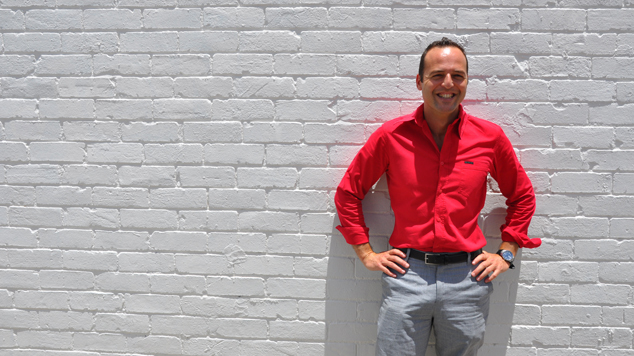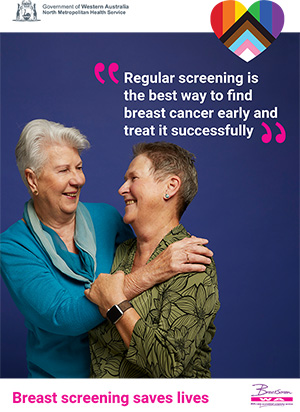 At the 7th International AIDS Society Conference On HIV Pathogenesis Treatment and Prevention, Dr Timothy Henrich reported on the progress of two ‘Boston patients’ who were treated for blood cancer lymphoma (one about three years ago and the other five years ago). Both men received chemotherapy and stem-cell transplants, and now after ceasing antiretroviral medication to suppress HIV, so far have no trace of HIV in their blood, for a period of fifteen and seven weeks respectively.
At the 7th International AIDS Society Conference On HIV Pathogenesis Treatment and Prevention, Dr Timothy Henrich reported on the progress of two ‘Boston patients’ who were treated for blood cancer lymphoma (one about three years ago and the other five years ago). Both men received chemotherapy and stem-cell transplants, and now after ceasing antiretroviral medication to suppress HIV, so far have no trace of HIV in their blood, for a period of fifteen and seven weeks respectively.
If you add together the ‘Berlin Patient’, the ‘Mississippi baby’ and the two ‘Boston Patients’, the world of HIV is now tracking the progress of four patients that have potentially been cured of HIV. The knowledge gained from these very rare and unique cases is driving hope and optimism that a cure for all is fast approaching.
Many in the medical profession are keen to moderate community expectations. Knowing that clinical trials and the potential scale up of a cure could easily be five, ten or more years away. In reality no one can give a definitive answer as to when a HIV cure for all will arrive, if ever. However, as the number of potentially cured individuals grows so will most likely the speculation. Many in the HIV sector are now using the term ‘HIV remission’ instead of cure as a more accurate way of describing the results being observed. This early on, in cure research, has doctors unwilling to as yet guarantee that HIV has been eradicated from every cell in the body, for all time.
Unlike the ‘Berlin Patient’ (Timothy Brown), the hype following the ‘Boston patients’ can be justified with two key different points. According to Dr Henrick they undertook “gentler chemotherapy (reduced intensity conditioning ), and the stem-cell transplantation received was not from a donor who had naturally resistant immune cells to HIV, which is rare (less than 1% of the population). This means that a potential HIV cure has just become safer (i.e. less chemo) and more widely applicable to everyone (i.e. easier to find compatible donors). Watching the HIV cure space evolve is like observing Moore’s law, where computing hardware capacity doubles every two years, that maybe my personal optimism creeping in, pardon the indulgence.
One hypothesis proposed by Dr Henrich as to why the ‘gentler chemotherapy’ and easier to find donor for stem-cell transplantation worked included the possibility that the donor immune cells were sufficiently different from that of the host immune cells. Leading to the donor immune cells to bump out and eliminate the hosts immune cells where HIV was resting/hiding. To confirm the true reason for HIV eradication will require further research and willingness by patients to place their health and their lives on the line.
The Star Tribune reported on Eric Blue a boy aged 12, who was born with HIV. On April 23rd he received an experimental treatment at the University of Minnesota for HIV and Leukaemia. Eric Blue died July 5th. The donor providing the stem cells was not only compatible but also had the advantage of immune cells genetically resistant to HIV. His treatment pathway was closely aligned to that of the successfully cured ‘Berlin patient’. The testing on Eric Blue, while not yet conclusive revealed that he had cleared HIV and the leukaemia. According to Dr. Michael Verneris, “This patient absolutely needed to have this transplant”. In June, Eric Blue developed graft-versus-host disease, a complication from stem-cell transplantation where the donor immune cells attack various tissues of the body. While the disease can be treated “…he had an especially bad form of it” said Dr. Verneris.
It seems cruel that any young person would have to endure HIV from birth, develop leukaemia, become free of both and then die weeks later. It is important to acknowledge the pioneering medical contribution of Eric Blue. The history of HIV is full of dignified men and women who have been prepared to participate in medical experimentation for the benefit of the greater good. Most of us stand in admiration and gratefulness for their efforts.
The mortality risk associated with chemotherapy and stem-cell transplant can be as high 20%. Individual circumstances like age, disease progression and chemotherapy intensity amongst others can vary the risk. There is no getting away from the notion that for some people living with HIV, taking a pill once a day is preferable to the 20% risk of death. Even so many others are very willing and prepared to risk their health in order for modern medicine to make further advancements.
Some doctors too, must be prepared to step out of their standard treatment guidelines and be prepared to explore options for improvements in HIV treatments and prevention. Innovation is rarely riskless. Which doctors and patients (who HIV and cancer) in Australia are prepared to take on the brave challenge?
The International AIDS Society conference comes to Melbourne in July 2014. Progress on all four potentially cured patients will most likely be widely sought after and broadcast. How wonderful would it be if soon Australia could lay claim to our own HIV cured person. To the courageous people, like Eric Blue, who accept the risks and nevertheless embark on the journey to advance human medical science endeavours, we deeply thank you.
Cipriano Martinez






Hello,My name is Priest Okuase herbalmagic temple” i welcome you all to Okuase Herbal home of solution to all your problems, I practices white magic/a mixture of African traditional medicine, spiritualism,psychic powers, rituals,native healing, spell casting, all of which are designed to take care of whatever adversity you may be facing,my mission is ensure that good prevails over evil and to ensure that all those that come in contact with me have peace of mind, success and happiness” …/Do you want solutions to money problems? /Do you want solutions to marital problems?/Do you want solution to childless?/Do you want solution to physical or health(HIV/AIDS) problems?/Do you want solution to problem in family relations? /Do you business growing from strength to strength?/Attraction of clients for your business? /Do you always have bad dreams?/Do you want to be promoted in your office? /Do you want your husband/wife to be yours forever?/Have you been scammed and you want to recover your lost money? /DO you want to win lottery,ETC. Once again thanks for your trust & patronage,I assure you that you are in the right place to get your heart desires just specify what you want and I assure you that my great oracle will grant your heart desires within 3-7 days.you will be happy knowing me as your spiritual father. NOTE:PriestOkuase contacts:- email: drokuaseherbalhome@yahoo.com OR Text,Whatsapp or call me on +2349032874171.
I WANT TO SHARE MY EXPERIENCE OF HOW I GOT CURED FROM HIV BY HERBAL
MEDICINE. It may sound strange! For the past 6years i have spent a lot of
money in buying anti-retroviral medicines to strengthen my immune system
and keep me healthy, until i read an article on the internet about an
Africa Herbalist who uses herbs and roots to cure cancer and all kind of diseases.
Though i never believed he can cure HIV, but i decided to give it a try
because i was desperate. Then i sent a message to the him on his email
drizazaibrahim@gmail.com. He prepared herbal medications and send it to me
through DHL COURIER SERVICE and i took it as he instructed. 11days after, i
went to the hospital to do a checkup, the result came out and i tested
NEGATIVE. I’m sharing this with you, because i believe there’s someone out
here who also desire to have this cure. feel free to send a message to him
through his email drizazaibrahim@gmail.com. or call on him +2348103355314
or add him on
WhatsApp
I WANT TO SHARE MY EXPERIENCE OF HOW I GOT CURED FROM HIV BY HERBAL
MEDICINE. It may sound strange! For the past 6years i have spent a lot of
money in buying anti-retroviral medicines to strengthen my immune system
and keep me healthy, until i read an article on the internet about an
Africa Herbalist who uses herbs and roots to cure cancer and all kind of diseases.
Though i never believed he can cure HIV, but i decided to give it a try
because i was desperate. Then i sent a message to the him on his email
drizazaibrahim@gmail.com. He prepared herbal medications and send it to me
through DHL COURIER SERVICE and i took it as he instructed. 11days after, i
went to the hospital to do a checkup, the result came out and i tested
NEGATIVE. I’m sharing this with you, because i believe there’s someone out
here who also desire to have this cure. feel free to send a message to him
through his email drizazaibrahim@gmail.com. or call on him +2348103355314
or add him on
WhatsApp
I WANT TO SHARE MY EXPERIENCE OF HOW I GOT CURED FROM HIV BY HERBAL
MEDICINE. It may sound strange! For the past 6years i have spent a lot of
money in buying anti-retroviral medicines to strengthen my immune system
and keep me healthy, until i read an article on the internet about an
Africa Herbalist who uses herbs and roots to cure cancer and all kind of diseases.
Though i never believed he can cure HIV, but i decided to give it a try
because i was desperate. Then i sent a message to the him on his email
drizazaibrahim@gmail.com. He prepared herbal medications and send it to me
through DHL COURIER SERVICE and i took it as he instructed. 11days after, i
went to the hospital to do a checkup, the result came out and i tested
NEGATIVE. I’m sharing this with you, because i believe there’s someone out
here who also desire to have this cure. feel free to send a message to him
through his email drizazaibrahim@gmail.com. or call on him +2348103355314
or add him on
WhatsApp